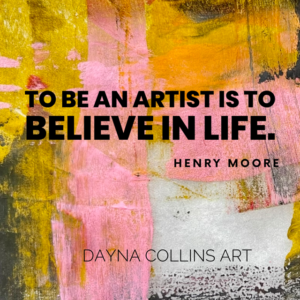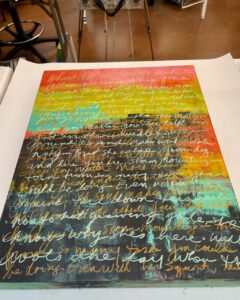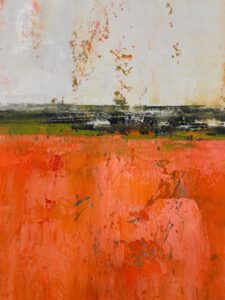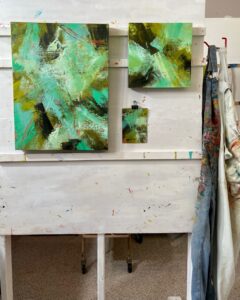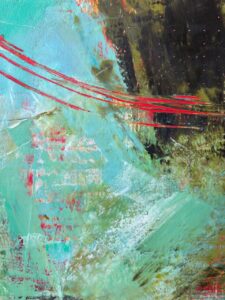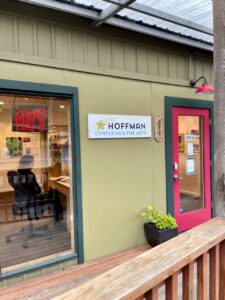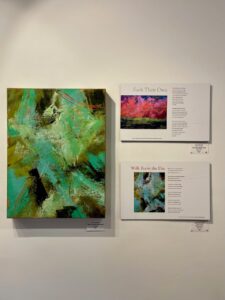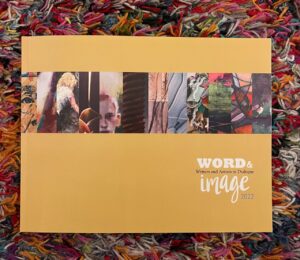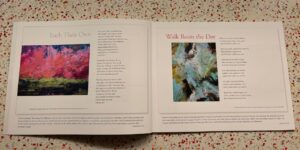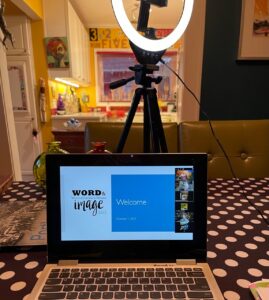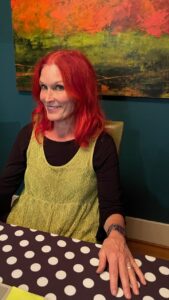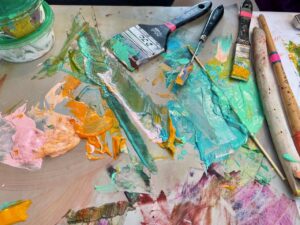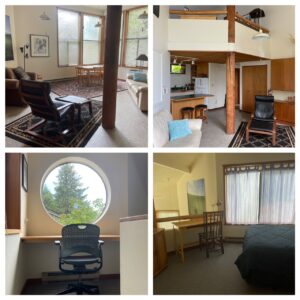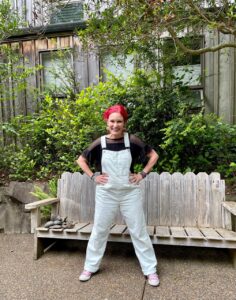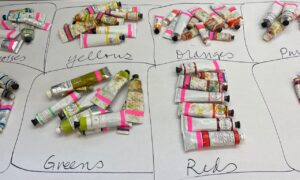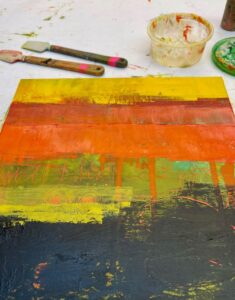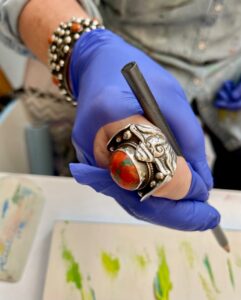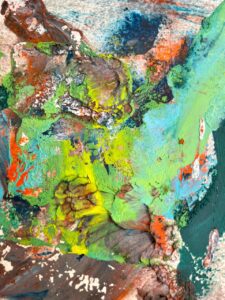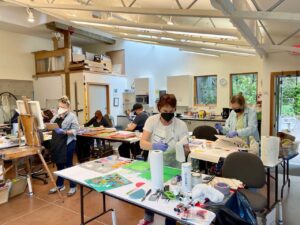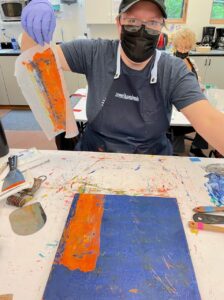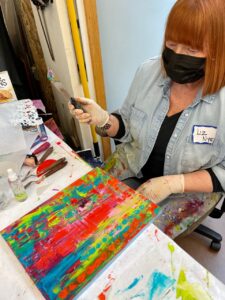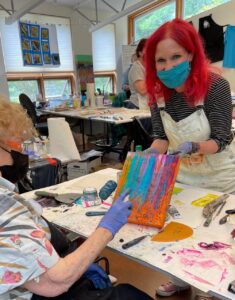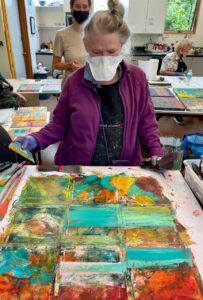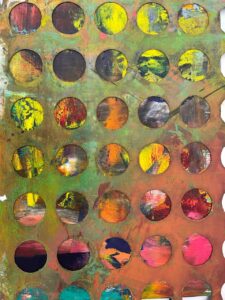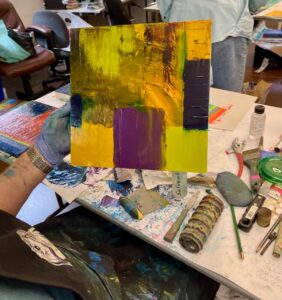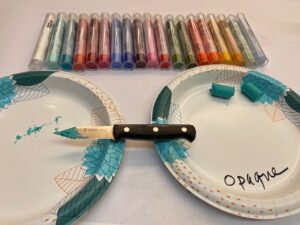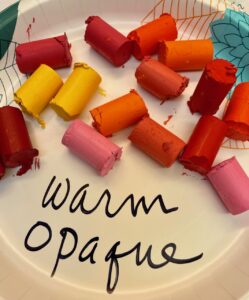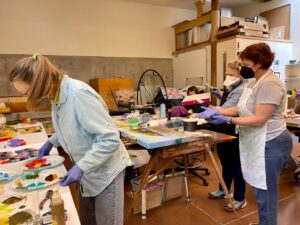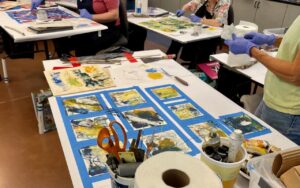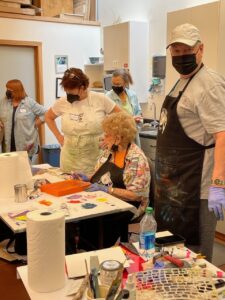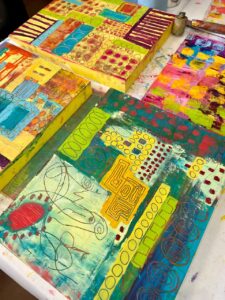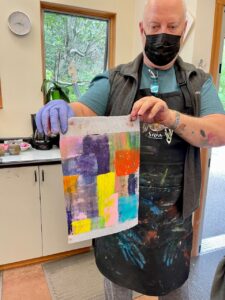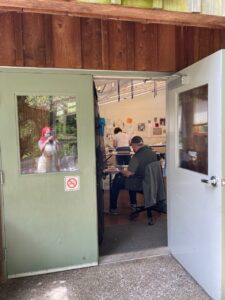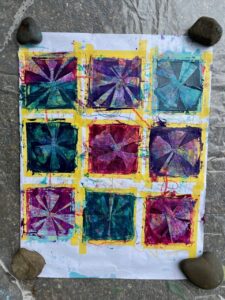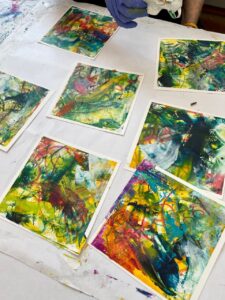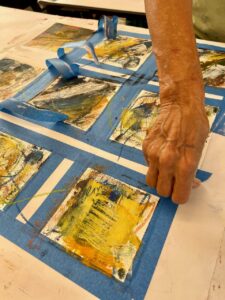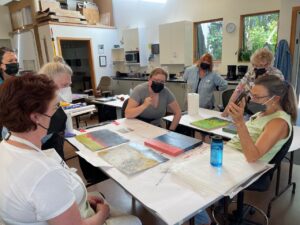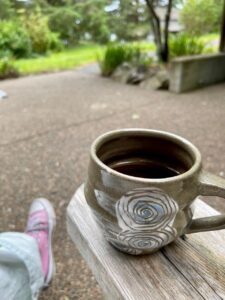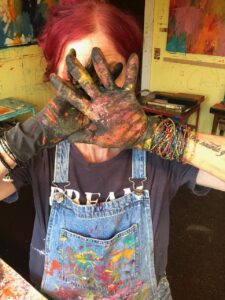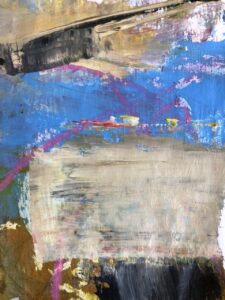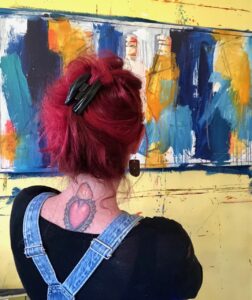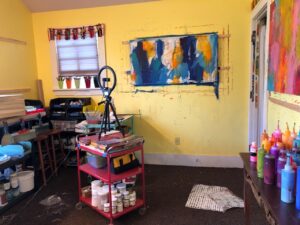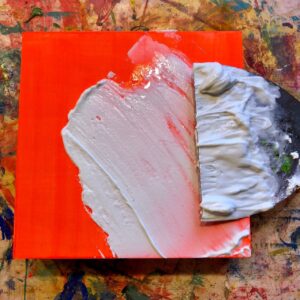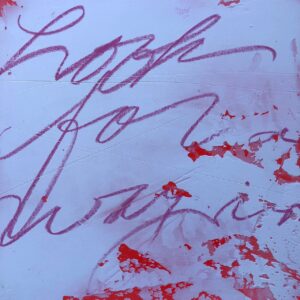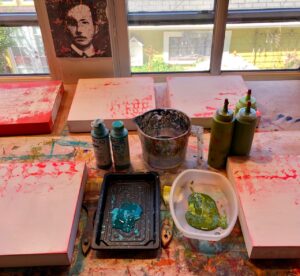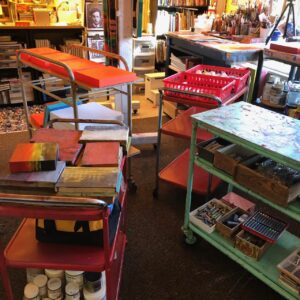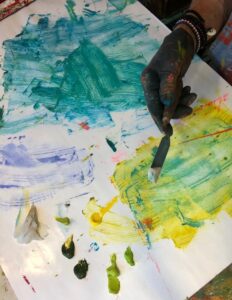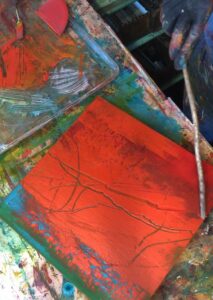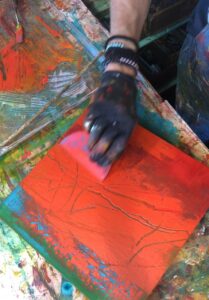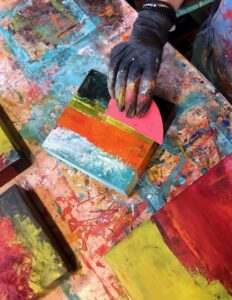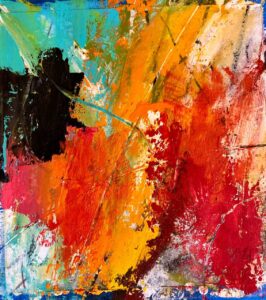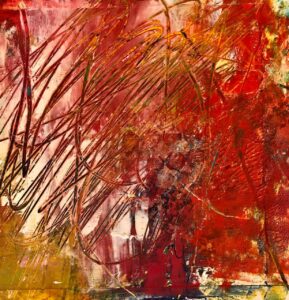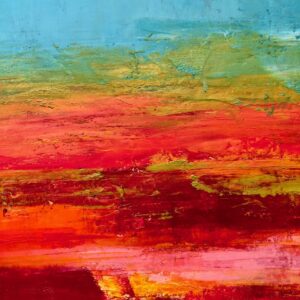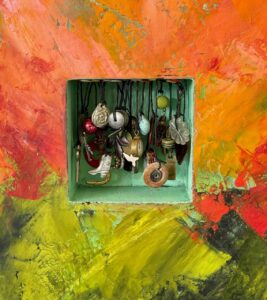
My January newsletter went out this week and in it I shared about my participation in the 2023 Salem Reads program. This community-wide reading event has been sponsored by the Salem Public Library Foundation since 2017. I was one of the original artists, and although I have been invited to participate each year since, I didn’t jump on the opportunity. . . .until this year. The chosen book is Trevor Noah’s Born a Crime: Stories from a South African Childhood.
Invited artists were instructed to read the book and then create a piece of art in response. I listened to the book on Audible, which was read by Trevor; I loved hearing Trevor’s accent and his inflections, making for an enjoyable and humorous experience. The book was presented as a series of short stories, focusing on different eras of his life as a child and young man. The book was heartwarming, funny, tragic, tender, and ultimately a story of redemption as Trevor rose above his tough circumstances.
I was aware of apartheid and knew a little about it, but Trevor’s stories brought it alive through his eyes of a child growing up during the extreme segregation of whites and blacks.
In my artist statement, I was able to share what led me to create what I did for this exhibit.
As I read ‘Born a Crime,’ so many images swirled in my mind. Trevor was born to a black mother and a white father during the extreme racial segregation of South African apartheid. Despite their circumstances, Trevor’s mother demonstrated feistiness, determination, and perseverance. As Trevor matured, he exhibited many of the characteristics of his mother, carving out a life filled with humor, music, inventiveness, and friendship. Before I began my painting in response to ‘Born a Crime,’ I wrote out the text from the Immorality Act of 1927 across the surface of my board, reminding me of the laws in place when Trevor was conceived and born. I painted this piece with the idea of a young man rising out of the darkness of apartheid, which I translated into colors. I filled the niche with objects representing Trevor’s creativity, spirit, and abundance despite his circumstances.
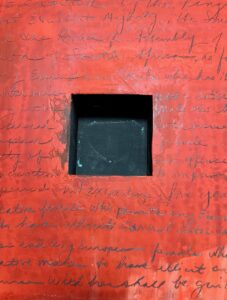

The piece I created is 16×16 inches square and three inches deep, with a 5×5 inch niche filled with charms and small trinkets. I attached these small items using string, which I tacked to the top of the niche using vintage, colorful thumb tacks.
The 2023 show runs from February 1-25, and will be held in the Art Hall at the Salem Public Library. At the end of February, the show will be packed up and transported to a series of regional libraries; my piece will return to Salem in June.
If you’re interested in learning more about the pieces of art created for the show, several of the participating artists (myself included), appeared on Joel Zak’s KMUZ radio show, Talking About Art, last Friday. A recording of the show can be found on the KMUZ website by going HERE. During my segment, I talked about my motivation behind the piece of art I created for the show.
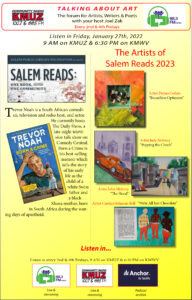
Interested in signing up for my newsletter? I send it out once a month and I share what I am doing, something about my art practice, special projects, a book review and recommendation, and an art quote. Follow this link to sign up.
